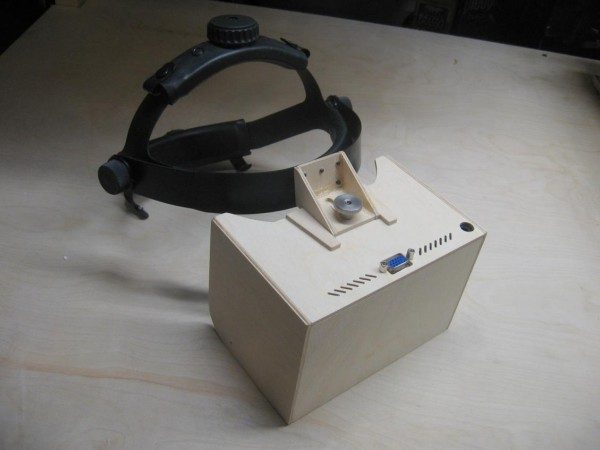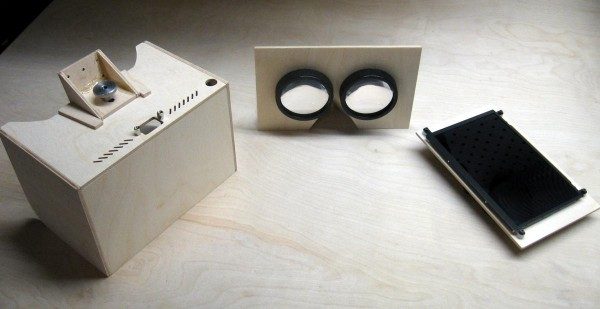Palmer Luckey has made it clear since the beginning that it wasn’t any incredible invention or unlikely innovation that makes the Oculus Rift head mounted display / VR headset possible. Instead, he credits the mobile device (smartphones, tablets, etc.) industry as being the catalyst that has made the Rift possible. Small high-density displays, accurate accelerometers, gyroscopes, and magnetometers are part and parcel of any modern mobile smartphone or tablet. Now that these components are in plentiful supply, quality HMDs can be built and sold at prices that are actually affordable for a mainstream audience. For a number of dedicated virtual reality enthusiasts, the December shipment of Oculus Rift units from the Kickstarter in August is too long to wait. So instead they’ve endeavored to build their own VR headsets and have provided DIY instructions for others to follow in their footsteps.
On August 7th Rod Furlan enthusiastically set out to build his own DIY Oculus Rift despite already ordering one through the Kickstarter. He has been detailing the build process over at VR/AR forums of MTBS3D.com. A number of other users have built DIY Oculus Rift HMDs based on Furlan’s instructions and parts list; user TheLostBrain has put together a gorgeous unit by designing a simple casing and using a CNC tool to machine it out of wood. The result is quite extraordinary:
In addition to listing all the necessary parts and showing where to get your hands on them, Furlan has created a simple template allowing people to create a casing for a DIY VR headset out of foam core:
DIY Oculus Rift Parts List:
- 1x – 5.6″ TFT LCD,1280*800, HV056WX1-100 (from http://bit.ly/UgXpOd, datasheet: http://bit.ly/NtvHP7)
- 1x – LCD control board (M.NT6867, NT68674.5X or equivalent (from http://bit.ly/O9SUBN, NT68674.5X datasheet: http://bit.ly/OgJ59O)
- 2x – 2″ 5x pocket loupe magnifier with Aspheric Lens (thanks Palmer! http://bit.ly/Tyt7sA)
Optional Parts:
- 1x – RocketFish Ultra-Thin Active HDMI cable 10ft (for improved mobility)
- 1x – Foam-core sheet, 4mm (for the case)
DIY Oculus Rift Foam Core Case Template and Instructions
- AutoCAD File: http://bit.ly/SVM7fZ (still work in progress!)
- PDF version: http://bit.ly/OCJS1g
- Instructions:
- Make sure to print at 100% scale, in poster mode and with cut-marks enabled using Adobe Reader.
- Tape all 4 pages to a 4mm tick sheet of foam-core using transparent masking tape.
- Using an x-acto knife, cut out the lens openings completely first, then mark all other lines (but don’t cut through).
- Cut through all outside lines to separate the shell from the sheet of foam-core.
- All the internal lines must be v-cut, either using this tool (http://bit.ly/OCKkgb) or manually (not as hard as you would imagine).
- Fold and enjoy
- Note: you may have to adjust the distance between the lenses based on your own IPD
If you’re interested in building your own DIY Oculus Rift, know that you’ll need some serious electronics skills. Be sure to check out Furlan’s thread at MTBS3D for the very latest info and for a great collection of DIY Oculus Rift photos from other members of the MTBS3D community! Furlan also runs the blog BitCortex if you want to see more from him.
For those that aren’t confident that they could pull off such a DIY feat, and missed the Kickstarter, the Oculus Rift developer kit is now available for pre-order directly from Oculus LLC.







